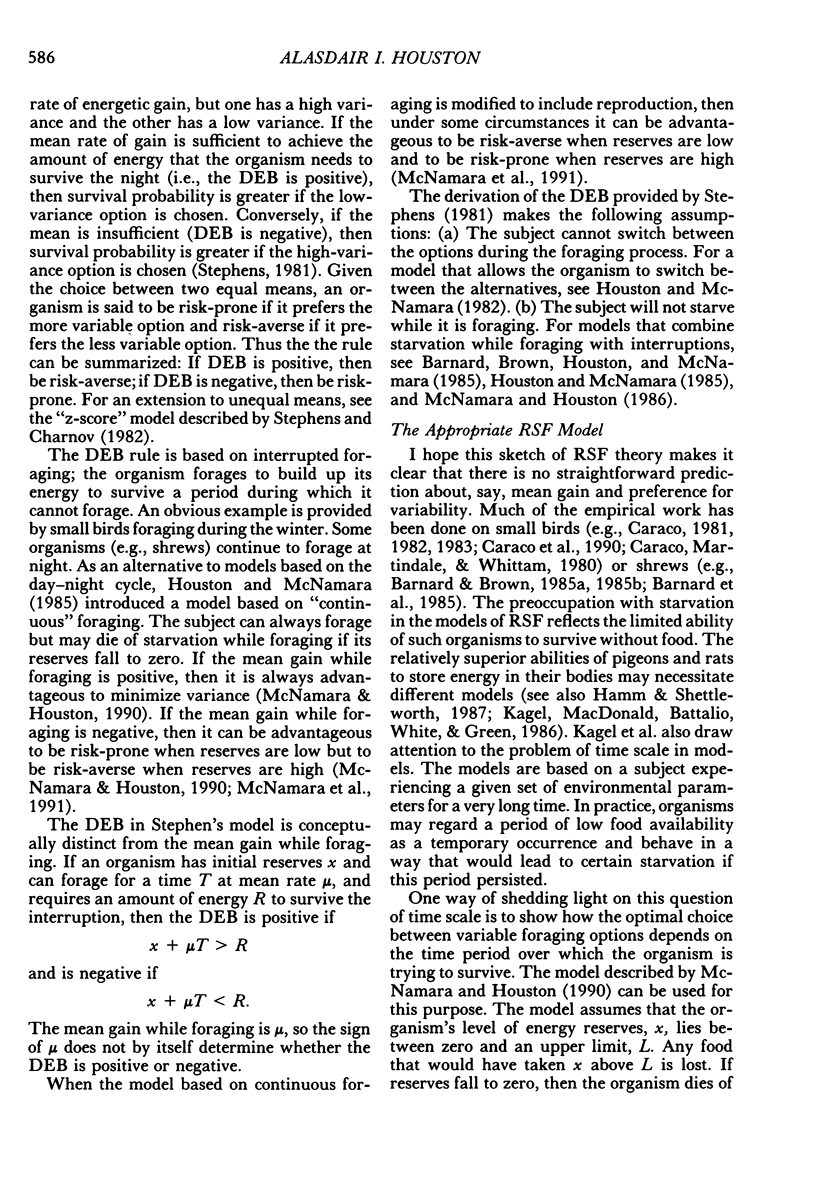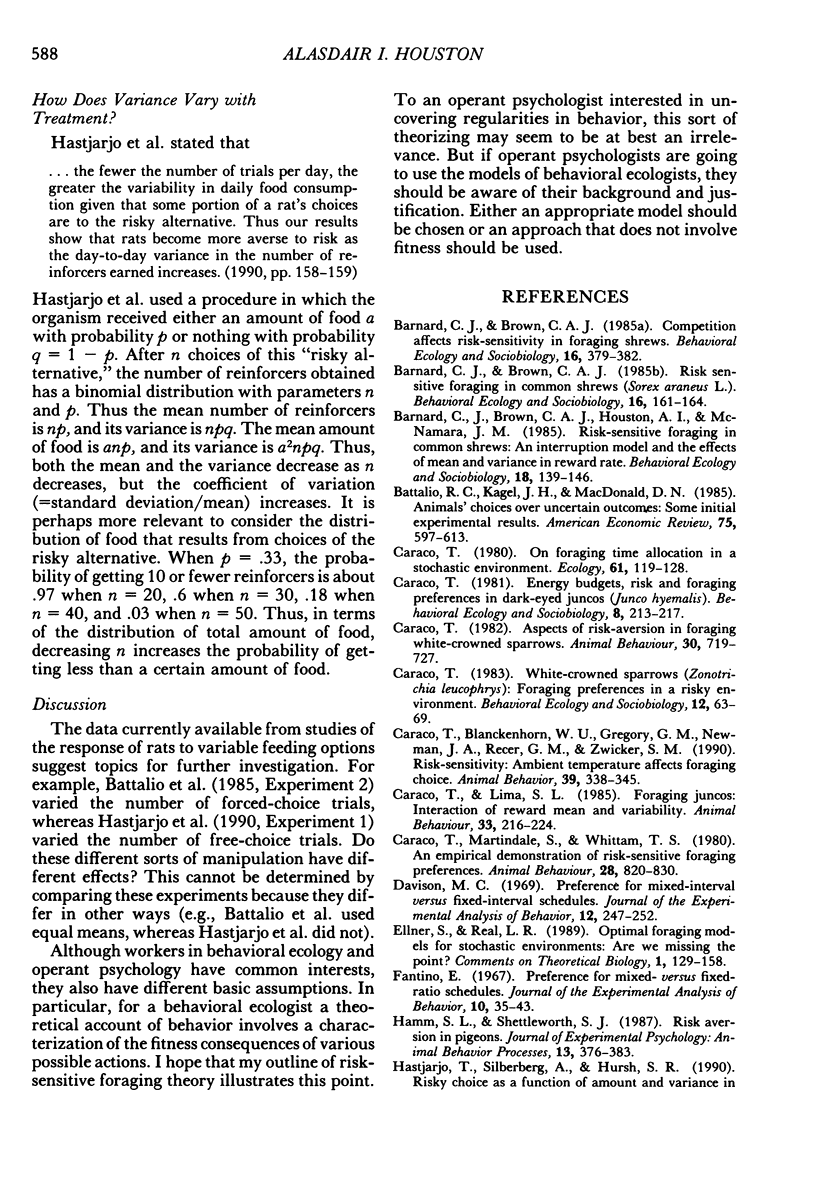Abstract
Hastjarjo, Silberberg, and Hursh (1990) have presented data on the foraging behavior of rats and discussed it in terms of risk-sensitive foraging theory. Because risk-sensitive foraging theory is comprised of several different models, it does not lead to general predictions about when an organism should prefer a foraging option with high variance to a foraging option with low variance. Any comparison of data with the predictions of the theory must be based on an appropriate model. I draw attention to various experiments that are potentially relevant to the results reported by Hastjarjo et al. and show how the time period over which the organism must survive can influence a model's predictions about risk sensitivity.
Full text
PDF




Selected References
These references are in PubMed. This may not be the complete list of references from this article.
- Davison M. C. Preference for mixed-interval versus fixed-interval schedules. J Exp Anal Behav. 1969 Mar;12(2):247–252. doi: 10.1901/jeab.1969.12-247. [DOI] [PMC free article] [PubMed] [Google Scholar]
- Fantino E. Preference for mixed- versus fixed-ratio schedules. J Exp Anal Behav. 1967 Jan;10(1):35–43. doi: 10.1901/jeab.1967.10-35. [DOI] [PMC free article] [PubMed] [Google Scholar]
- HERRNSTEIN R. J. APERIODICITY AS A FACTOR IN CHOICE. J Exp Anal Behav. 1964 Mar;7:179–182. doi: 10.1901/jeab.1964.7-179. [DOI] [PMC free article] [PubMed] [Google Scholar]
- Hastjarjo T., Silberberg A., Hursh S. R. Risky choice as a function of amount and variance in food supply. J Exp Anal Behav. 1990 Jan;53(1):155–161. doi: 10.1901/jeab.1990.53-155. [DOI] [PMC free article] [PubMed] [Google Scholar]
- Killeen P. On the measurement of reinforcement frequency in the study of preference. J Exp Anal Behav. 1968 May;11(3):263–269. doi: 10.1901/jeab.1968.11-263. [DOI] [PMC free article] [PubMed] [Google Scholar]
- McNamara J. M., Houston A. I. A general framework for understanding the effects of variability and interruptions on foraging behaviour. Acta Biotheor. 1987;36(1):3–22. doi: 10.1007/BF00159228. [DOI] [PubMed] [Google Scholar]


